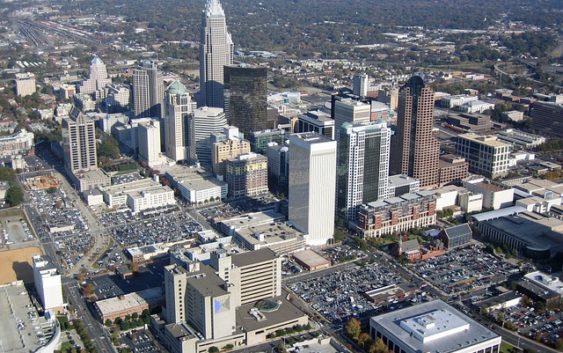- Caught on camera | Tornado touches down in Missouri
- Carolina Hurricanes playoff tickets go on sale next week
- Storms kill 6 in the South and Midwest as forecasters warn of catastrophic rains, floods this week
- Weather Impact Alert: Cold front could trigger severe weather in Houston area this weekend | See timeline
- Violent storms cut through the South and Midwest, spawning tornadoes and killing 3
Hurricane Florence closes the only road connecting NC’s Outer Banks, photos show

(This story was updated at 4:30 p.m. Eastern)
Hurricane Florence’s “life threatening” storm surge arrived Thursday morning, breaching dunes and sending white water and sand washing across the only highway linking North Carolina’s barrier islands in the Outer Banks.

NC 12 early Thursday, as waves generated by Hurricane Florence covered the highway with sand and surf.
NCDOT
The North Carolina Department of Transportation closed N.C. Highway 12 shortly after 1 p.m. between Hatteras Village and the Bonner Bridge, noting storm wash had made the road impassable in multiple locations. A photo tweeted by the department showed sand had covered one lane as of 7:30 a.m Thursday.
“As expected, conditions are worsening on Highway 12 in the usual spots,” said the tweet. “This is a picture of the S-Curves north of Rodanthe this morning, with high tide still a few hours away. While the road is still “passable” right now, travel is not advised.”
Shortly after noon, the NCDOT tweeted another showing overwash spreading to areas north of Hatteras Village. “This is not the time to be out on the roads on either Ocracoke or Hatteras Islands,” said the tweet.
Orrin Pilkey, beach preservation and sea-level rise expert and James B. Duke Professor Emeritus of Geology at Duke’s Nicholas School of the Environment predicted the flooding of the main north-south artery to the Outer Banks earlier this week.
“We can kiss Highway 12 goodbye again,” Pilkey said in a Duke news release. “Flooding will occur. And beach erosion will likely be severe.”
Pilkey warned that after the major erosion expected from Florence, North Carolina should avoid building in endangered parts of the coast and allow the barrier islands to revert to a more natural state where possible.
“Barrier islands actually require storms for their survival,” he said.
At a 5p.m. news conference Thursday, Gov. Roy Cooper said the first bands of Florence had reached the coast, and there are “days more to go.”
“Wind and waves are driving water onto roads in the coast. Nearly 30,000 people in NC are already without power, and these numbers are rising,” Cooper said.
The Weather Channel reported at 10:30 a.m. Thursday that the ocean had risen 1.1 feet at Hatteras Island since the storm’s arrival just before dawn.
The National Hurricane Center warned Thursday that the storm will “pile up water” along the coast.
The hurricane’s maximum wind speed slowed to 105 mph overnight, but experts predict 13 feet of storm surge will spill across some coastal areas, creating “catastrophic” and “life-threatening inundation,” said a NHC statement issued Thursday.
FEMA said Thursday the ocean would also begin rising in a matter of hours in North Carolina’s bays, sounds and coastal rivers, due to storm surge and “feet of rain” over a period of days.
The NC Coastal Review reported Wednesday that state transportation officials were focused this week on keeping the “island’s lifeline” open, in anticipation of 50,000 people using N.C. 12 as a hurricane evacuation route.
Dare County Emergency Management tweeted out a video shortly after 8 a.m. Thursday, showing the ocean churning white with surge and large waves at Jennette’s Pier near Nags Head.
The N.C. Ferry Division, which carries motorists to and from the Outer Banks, shut down all seven of its routes at 6 p.m. Wednesday. “The time has come to get our ferries to safe harbor and hunker down for the storm,” said a ferry division tweet.
Elsewhere on the North Carolina coast, images showed up on Twitter of water covering lawns and surrounding homes in North Topsail Beach, south of the Outer Banks. One photo, tweeted at noon by Zach Lower, noted: “Hurricane Florence effects already playing a big factor in the storm surge at North Topsail Beach.”
Mark Price: 704-358-5245, @markprice_obs